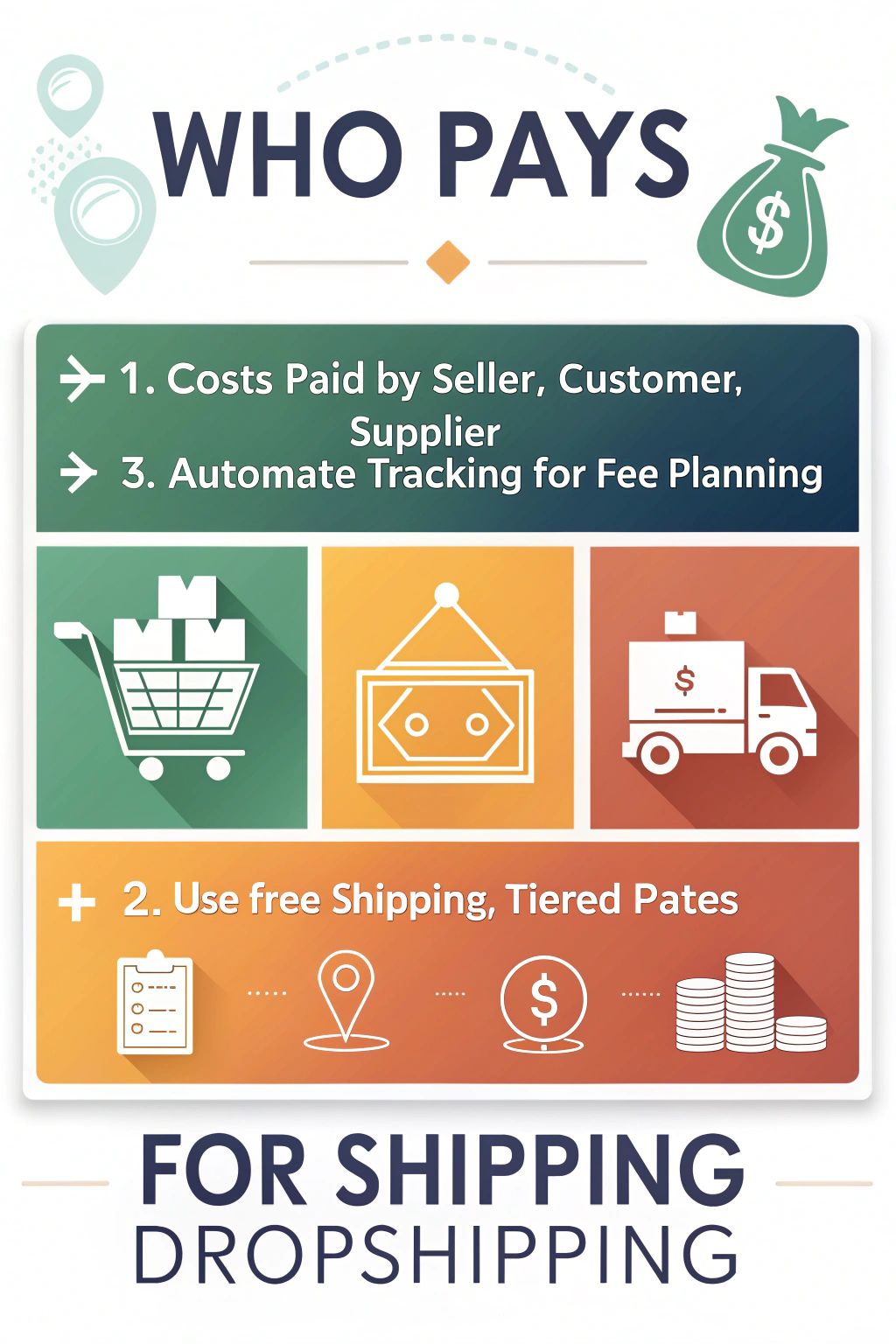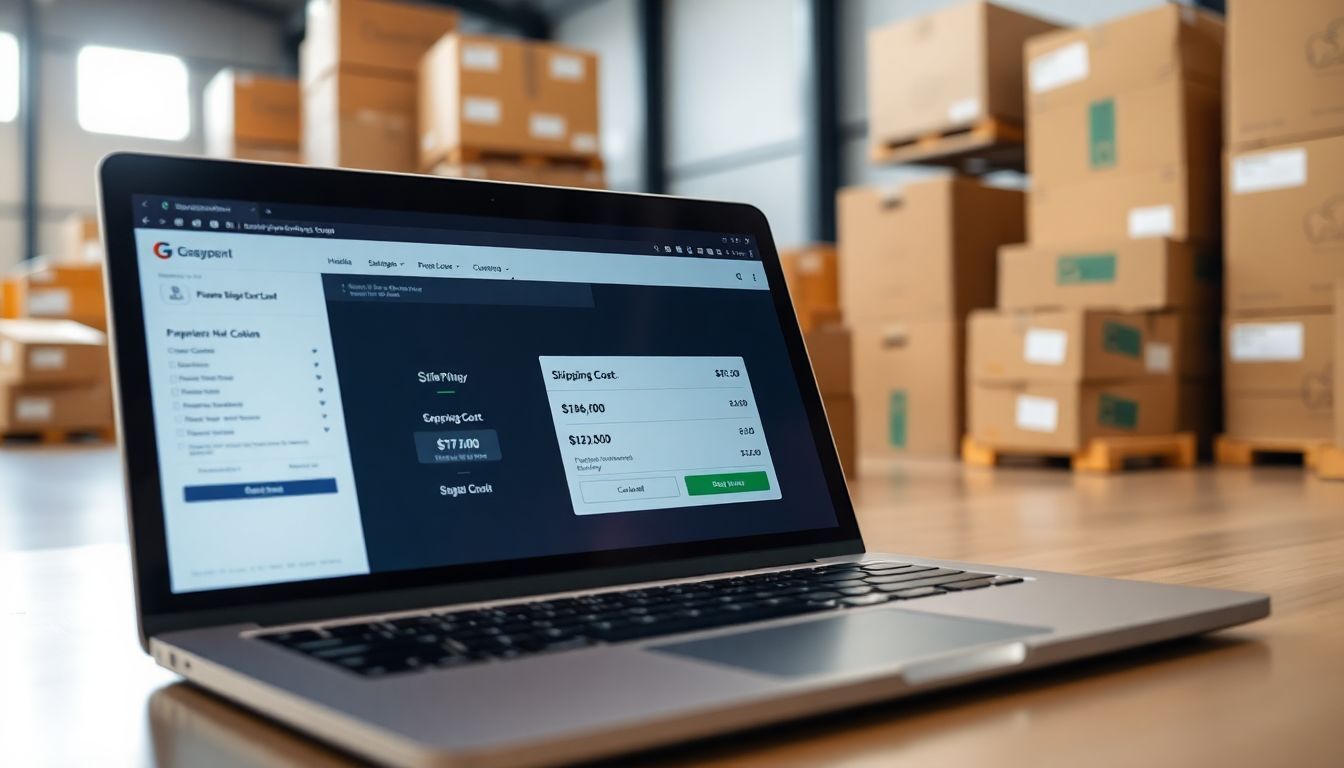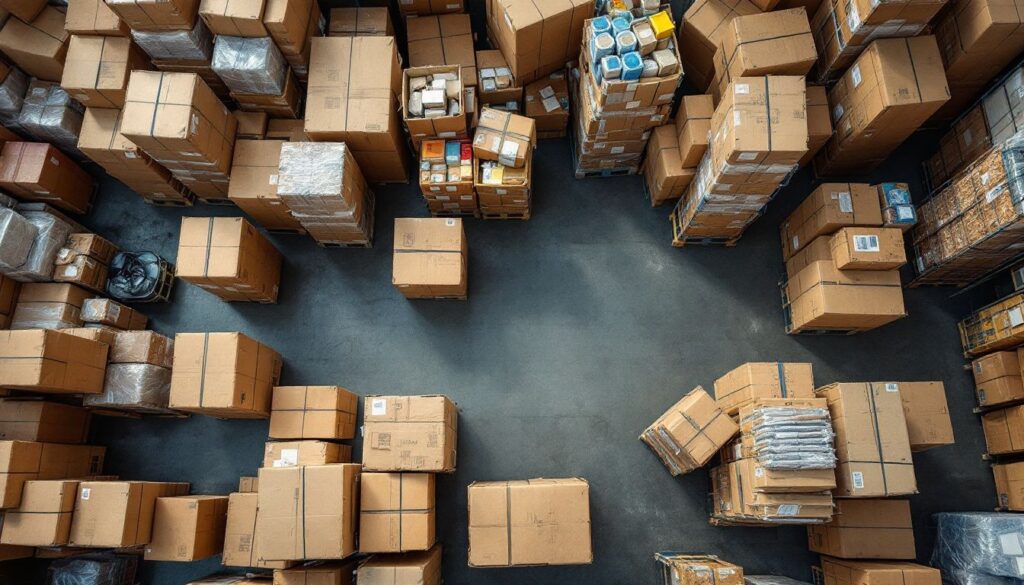Shipping costs can confuse many dropshippers. Who pays for shipping? Is it the seller, the customer, or maybe even the supplier? These questions often leave online store owners scratching their heads.
In dropshipping, handling shipping costs is key to running a smooth business. A smart strategy can save money and keep customers happy. This blog breaks down who covers these fees and shares tips to manage them better.
Keep reading to get all the answers!
Key Takeaways
- Shipping costs in dropshipping can be paid by the seller, customer, or supplier. The setup depends on store policies and agreements.
- Sellers often absorb shipping fees or raise product prices to cover them. Customers may pay directly at checkout for transparency.
- Suppliers may help with shipping costs through local inventory or bulk deals. Tools like SmokeDrop simplify order fulfillment and tracking.
- Strategies like free shipping, flat-rate fees, or tiered rates boost sales while controlling expenses. Clear refund policies handle return costs smoothly.
- Automation tools and cost calculators save time, reduce errors, and offer better planning for international orders or cross-border fees.

Who Pays for Shipping in Dropshipping?

Shipping costs in dropshipping can feel tricky. It depends on who sets the rules—seller, customer, or supplier.
Seller Responsibility
Sellers handle shipping costs and logistics through e-commerce tools. They must ensure stock levels are accurate since this impacts delivery times and customer satisfaction. Clear roles with suppliers help avoid confusion about who pays for shipping.
Order fulfillment stays on the seller’s shoulders, even with automated systems in place. They need to manage costs efficiently while maintaining fast service. Choosing local inventory through wholesale buying can cut down long shipping times and fees.
Customer Responsibility
Customers often pay for shipping in dropshipping. This happens if the seller sets up their store to pass these costs directly. Many online stores show shipping fees at checkout, so buyers know what they are paying.
Some sellers raise product prices instead of showing separate delivery costs. This way, customers still cover shipping without noticing it as a direct charge. Others opt for flat rates or let buyers choose faster options for an extra fee.
Customers must check delivery terms before purchasing to avoid surprises with charges later on.
Supplier Contribution
Suppliers can play a key role in shipping costs. Some suppliers handle shipping directly, making it easier for retailers to focus on sales. Platforms like SmokeDrop offer automated order fulfillment, which helps manage this process smoothly.
Local inventory stocking by suppliers may lower costs or speed up delivery times. Suppliers using e-commerce platforms also streamline logistics, reducing hassle for retailers. Wholesale purchasing agreements might influence how much the supplier contributes to shipping expenses.
Shipping Cost Strategies in Dropshipping
Shipping costs can be tricky in dropshipping. There are smart ways to cover these fees without losing profit—let’s explore them!
Free Shipping
Free shipping attracts customers. Dropshippers often absorb the delivery cost or add it to product prices. This strategy makes products more appealing and boosts sales.
Offering free delivery builds customer loyalty. Many users prefer stores that cover shipping expenses upfront. It simplifies buying decisions without surprise fees at checkout.
Increasing Product Prices
Retailers can adjust product prices in their shopping carts to cover shipping costs. This strategy helps keep profits steady while managing expenses. SmokeDrop simplifies order fulfillment and allows retailers to raise prices tied to shipping without much hassle.
Local inventory stocking through wholesale purchasing also saves money. These savings let sellers increase product prices without losing customers. Better supplier collaboration improves cost management, making pricing adjustments easier.
Automated tracking adds visibility, helping decide fair price changes based on real shipping costs.
Charging Customers Directly
Raising product prices isn’t the only way to cover shipping costs. Many dropshippers pass those fees straight to their buyers. Charging customers directly for shipping keeps pricing clear and simple.
Buyers know exactly what they’re paying for—no hidden markups.
This method often works best with transparent checkout systems. Show exact rates before purchase, like $5 or $10 depending on location or weight. It’s a fair setup for both sides and helps maintain trust in online stores while managing dropshipping fees effectively.
Offering Flat Shipping Rates
Flat shipping rates charge the same fee for every order, no matter the size or weight. This keeps costs simple and easy to understand for customers. Many dropshippers use this strategy to avoid confusion about varying fees, especially for large orders.
Using flat rate shipping also helps control expenses. Dropshippers can predict costs better and adjust product prices to cover these fees. It’s a smart choice if dealing with many suppliers offering different rates.
Advanced Shipping Strategies
Smart shipping plans can make a big difference in profits. Use creative ways to handle fees and keep customers happy!
Tiered Shipping Rates
Tiered shipping rates let dropshippers offer flexible pricing. It helps balance costs and keeps customers happy.
- Offer lower rates for small orders to attract buyers who shop for fewer items. This makes them feel they pay fair shipping fees.
- Charge higher rates for bigger orders, as they might need more packaging or costlier carriers. Buyers understand large orders can be pricier to ship.
- Use spending levels to set tiers, such as free shipping after $50 or $5 flat under $30. Many shoppers increase their basket size for free shipping offers.
- Create clear rules for these rates upfront on your store page. Customers prefer knowing what prices look like before checkout.
- Match tiered rates with sales seasons or promotions, like holiday discounts on all tiers below $100. It encourages people to buy within those periods.
- Adjust tiers based on where buyers live—local orders may cost less while international ones require higher fees due to customs or distance.
- Test different structures over time to find what works best for profit and customer satisfaction in your dropshipping business without guessing blindly!
Per-Item Shipping Costs
Shipping costs can make or break dropshipping profits. Per-item shipping costs offer a simple way to charge customers based on what they buy.
- Sellers charge shipping fees for each product sold. This avoids losses when items differ in weight or size.
- Larger, heavier items usually cost more to ship. Smaller products may have lower delivery fees.
- Using item-specific shipping rates helps cover real shipping expenses. This keeps margins steady while avoiding surprises.
- Suppliers sometimes decide per-product fees ahead of time, making it easier for sellers to calculate costs upfront.
- Clear pricing builds trust with buyers and avoids cart abandonment caused by unclear shipping policies.
- Dropshippers can display individual shipping rates at checkout for transparency.
- Adjusting fees per item ensures fair pricing, especially for customers buying mixed-size orders.
- Specialized delivery costs reduce confusion compared to flat-rate options.
- Online tools help sellers set up accurate, itemized shipping charges quickly.
- Managing such shipping strategies requires attention but offers better profit control over time!
Promotion-Based Shipping Discounts
Offering per-item shipping costs can be clear for some stores, but discounts can grab attention. Promotional shipping offers are a smart way to boost sales and attract buyers.
- Offer free shipping on orders over a set amount. This encourages shoppers to spend more in one visit.
- Create “limited-time” discounted shipping promotions. Buyers love urgency—it gets them to check out faster.
- Use holidays or special events for marketing-based shipping discounts. Tie special deals to days like Black Friday or Cyber Monday.
- Add promotion-based shipping savings for repeat customers. Rewarding loyalty makes them come back again and again.
- Test flat-rate discount campaigns during slow sales months. This helps keep profits steady throughout the year.
- Partner with suppliers who offer advanced shipping solutions at better rates during promotional periods.
- Share exclusive cost-effective shipping promotions with your email list subscribers only—it feels personal and drives engagement.
- Introduce tiered discounts based on order size during big sales—bigger orders get cheaper (or free) delivery rates!
Managing International Shipping Costs
Shipping overseas can get tricky with extra fees and delays. Picking the right carrier and planning costs is key to staying profitable.
Choosing the Right Carrier
Choosing the right shipping carrier is a key step for dropshippers. It impacts costs, delivery times, and customer satisfaction.
- Research different carriers and compare their rates. Some carriers offer discounts for bulk shipping or long-term use.
- Check the delivery speed each carrier provides. A fast option improves customer happiness but usually costs more.
- Look into international shipping options if selling worldwide. Not every carrier handles global shipments well.
- Test reliability through past reviews or personal trial runs. Unreliable carriers can lead to lost packages and angry customers.
- Compare tracking systems offered by various carriers. Good tracking keeps customers informed about their orders.
- Evaluate customer service quality of the carrier you choose. Quick help from a carrier can solve issues faster.
- Consider the range of locations served by carriers in your area. Some providers only cover certain cities or regions.
- Ask suppliers which shipping partners they work with often (if any). This can reduce confusion during order processing.
Next, let’s explore managing international shipping costs wisely to boost profits further!
Calculating Cross-Border Fees
Cross-border fees can confuse many dropshippers. These costs include taxes, customs duties, and shipping charges across countries.
- Understand international shipping fees. Each country has different rules and taxes for imports. Research the destination country’s policies before selling.
- Learn about crossborder logistics fees. Customs clearance may involve handling charges or documentation fees that add extra costs.
- Calculate tariff changes early. Trade policies can shift quickly, affecting costs for certain goods in specific regions.
- Include currency conversion impacts. Exchange rates can increase overall expenses when dealing with global suppliers.
- Estimate overseas shipping charges carefully. Check with carriers for accurate rates to avoid surprises later.
- Use tools to calculate cross-border shipping costs easily. Online calculators can simplify fee estimation based on product type and weight.
- Track international parcel delivery costs regularly. Create a system to monitor changes in fuel rates or carrier pricing updates.
- Work with trusted suppliers for managing crossborder shipping expenses smoothly. Aim for better communication on potential hidden charges upfront.
- Plan global shipping expenses into product prices wisely for profit margins to remain stable over time.
- Avoid customer dissatisfaction caused by unexpected international freight costs by offering clear details during checkout stages online.
Adapting to Tariff Changes
Tariff changes can impact dropshipping costs. Sellers must adjust quickly to manage profits and keep shipping affordable.
- Study new customs duties in target countries. These fees can vary based on trade laws.
- Update product prices to reflect increased import costs. This helps cover unexpected charges.
- Work with suppliers who understand changing tariffs. They might offer solutions to reduce fees.
- Choose carriers familiar with tariff adjustments to avoid delays or extra costs at borders.
- Calculate import and export fees before selling globally to prevent surprises later on.
- Monitor trade policy news regularly for updates affecting shipping expenses.
- Offer region-specific promotions to balance high tariff areas with lower-cost regions.
- Track how changes affect demand so adjustments can be made promptly without losing customers.
- Review order data monthly to see where tariffs cut into profits the most.
- Focus on less-impacted markets while addressing high-tariff zones strategically for cost savings.
Optimizing Shipping Processes
Cutting shipping costs can be simple—smaller packages, better supplier deals, and smart tracking make a big difference. Keep reading to learn more tips!
Reducing Package Sizes
Reducing package sizes helps save money and makes shipping faster. Smaller packages also help the environment by using less material.
- Use smaller boxes or envelopes to fit products snugly. This avoids wasted space inside the package.
- Choose lightweight materials like bubble mailers instead of heavy cardboard. This cuts shipping weight, reducing costs.
- Remove extra fillers like foam or paper unless required for protection. Less filler means lighter and more compact parcels.
- Work with suppliers to use smaller packaging for products before shipment. Bulkier sizes make shipping pricier.
- Combine multiple items into one box if possible. Sending fewer packages lowers fees overall.
- Trim unnecessary labels, tags, or plastic wraps from products before packing them for delivery.
- Test different package dimensions on shipping rate calculators to find cheaper options for common destinations.
- Reorganize product arrangements inside boxes for a tighter fit, which prevents excess movement during transit.
- Invest in better packing tools that allow precise cutting and folding of custom-sized boxes for your orders.
- Track real shipping costs over time to see how much savings smaller packaging creates in your dropshipping process.
Negotiating with Suppliers
Squeezing savings out of shipping costs often starts with suppliers. Vendors can help slash expenses if you negotiate well.
- Ask for bulk discounts even if your orders are small. Suppliers often agree to this to keep long-term business relationships.
- Push for better shipping rates through volume promises. Suppliers may lower their charges if they think orders will grow over time.
- Request customized packaging that fits products snugly. Smaller packages save money on shipping and materials.
- Compare multiple suppliers to find the best terms. Some offer faster delivery, free handling, or cheaper international shipping.
- Build strong relationships by staying loyal and clear about needs. Trust leads to fairer deals and smoother communication.
- Negotiate added perks, like extended payment cycles or waived restocking fees on returns.
- Discuss shared costs for promotions with holiday shipments or big launches—suppliers often chip in during peak seasons.
- Study market trends before asking for cost cuts, so you know industry norms and can argue convincingly.
- Bring up competitors’ offers to get better terms from your current supplier without needing to switch vendors.
- Secure written agreements after settling on new terms, avoiding confusion and ensuring no hidden charges arise later on!
Tracking Real Shipping Costs
Tracking shipping expenses is vital for dropshippers. It helps them manage shipping costs and plan finances better.
- SmokeDrop offers tools to track shipping costs in real time. This keeps retailers updated about every expense involved.
- Its integration with Shopify, BigCommerce, and WooCommerce simplifies tracking. Retailers can link their stores directly for seamless updates.
- Real-time cost tracking ensures no surprises later. Both retailers and customers stay informed about expenses instantly.
- The platform allows access to over 20,000 products with clear shipping details. This helps dropshippers select affordable options from suppliers.
- Automatic order syncing optimizes the process further. It avoids manual errors while updating order statuses automatically.
- Such tools also aid in financial planning for shipping logistics. Dropshippers gain better visibility into overall costs.
- Enhanced communication between suppliers and retailers creates accountability too. Clear data sharing reduces disputes related to pricing or delays.
- With rising cross-border fees, these features are helpful globally too! Tracking international shipments ensures smoother operations abroad.
- Retailers need accurate insights into all orders—big or small—on time!
- Combining local carriers with this platform works best for cutting extra charges!
How to Handle Shipping on Returns
Handling return shipping can get tricky because someone has to pay for it. It’s vital to decide upfront if the customer, supplier, or your business will cover these costs.
Who Covers Return Shipping?
Retailers often handle return shipping costs. Using tools like SmokeDrop, they can manage these costs better. The platform helps sync tracking numbers for smoother processing. Suppliers may also share in these costs if there’s a prior agreement.
Collaboration between suppliers and retailers affects who pays for returns. Retailers control inventory and order management, which impacts cost decisions. A user-friendly system makes the process efficient for customers while controlling expenses.
Policies for Refunds and Exchanges
Clear refund and exchange policies help avoid confusion. Dropshippers must outline who pays for return shipping—whether it’s the customer, the seller, or split between both. Tools like SmokeDrop automate refunds and exchanges, simplifying order management.
This platform also ensures smooth product import and tracking of returns.
Having local inventory through wholesale purchasing can speed up exchanges and reduce costs. Integrating platforms like Shopify or WooCommerce streamlines these processes further. Efficient logistics boost trust with customers while managing returns effectively leads to better shop performance.
Understanding Dropship Processing
Dropship processing starts with smooth order fulfillment. Platforms like SmokeDrop make this easy by automating the process. Retailers can quickly import over 20,000 products such as water pipes, vape items, and CBD goods into Shopify or WooCommerce stores.
Orders sync automatically across systems, ensuring accurate tracking for both sellers and customers.
SmokeDrop also allows retailers to manage inventory without holding stock in bulk. Wholesale purchasing is an option too, without any minimum order limits. Suppliers and retailers stay connected through real-time inventory updates and simple management tools.
The next step focuses on choosing tools to manage shipping effectively.
Tools and Resources for Shipping Management
Managing shipping can feel tricky, but smart tools make it easier. Use them to save time and cut costs in your dropshipping business.
Shipping Rate Calculators
Shipping rate calculators help dropshippers estimate costs fast. These tools include freight rate calculators, parcel delivery estimators, and transportation expense trackers. They can show shipping fees in seconds based on location, package size, and carrier choice.
Dropshippers save time using these cost estimation tools to plan budgets better. Cargo shipping cost estimators also prevent surprises by identifying hidden charges upfront for both local and international shipping needs.
Automation Tools for Dropshipping Stores
SmokeDrop helps dropshippers save time through automated tasks. It handles order fulfillment, inventory synchronization, and tracking updates seamlessly. Users can import over 20,000 smoke shop products into their online stores without hassle.
The platform integrates well with Shopify, WooCommerce, and BigCommerce for smooth management. Retailers can manage inventory and pricing from one dashboard. It also supports wholesale purchasing with no minimums—great for stocking local inventory while cutting costs efficiently! Transitioning to shipping cost strategies is key next.
Supplier Collaboration Platforms
Order fulfillment automation relies on strong links with suppliers. Supplier collaboration platforms simplify these connections for dropshippers. Platforms like SmokeDrop help manage inventory, orders, and tracking updates.
They sync product data between retailers and suppliers in real time.
Retailers can buy wholesale without meeting minimum order rules. These tools also work well with Shopify, WooCommerce, and BigCommerce stores. With such integrations, store owners save time while managing shipping and stock efficiently.
Conclusion
Shipping costs in dropshipping depend on smart planning. Sellers, customers, and suppliers all play a role in covering these fees. Simple strategies like flat rates or free shipping make it easier to manage.
Tools and automation save time while reducing errors. By handling shipping wisely, dropshippers can grow their business with less hassle!
FAQs
1. Who usually pays for shipping in dropshipping?
In most cases, the customer pays for shipping when they place an order. But sometimes, the business might offer free shipping and cover the cost themselves.
2. Can I charge customers more than what I pay for shipping?
Yes, you can! Many businesses mark up shipping costs to make a little extra or balance their expenses.
3. What happens if the supplier offers free shipping?
If your supplier offers free shipping, that’s great—you don’t have to pay anything extra! You can pass this on to your customers or keep it as part of your profit strategy.
4. Should I include shipping fees in my product price?
It depends on your plan. Some sellers include it in the product price to offer “free” shipping (customers love that). Others list it separately so prices seem lower upfront.




